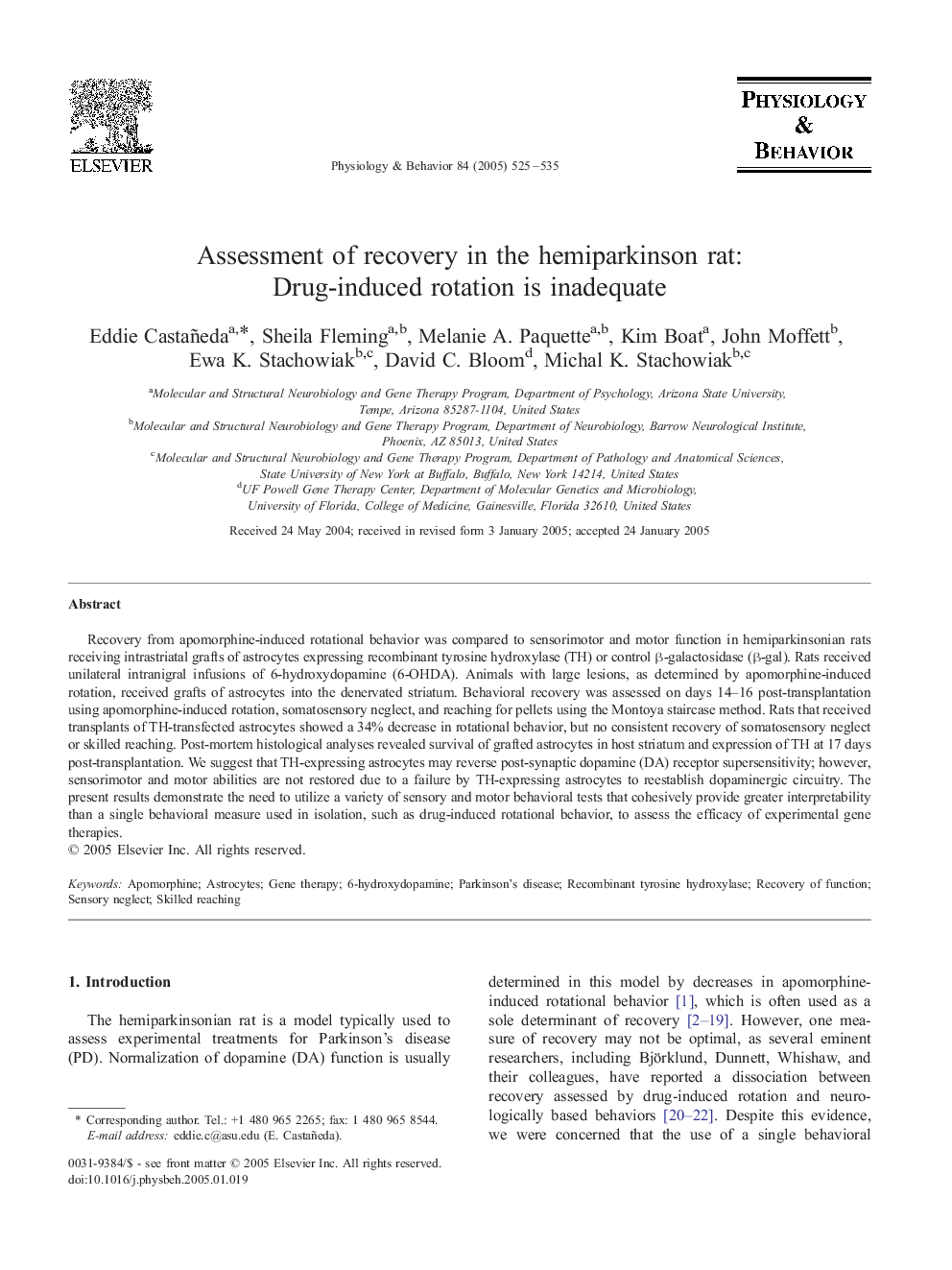| Article ID | Journal | Published Year | Pages | File Type |
|---|---|---|---|---|
| 9149668 | Physiology & Behavior | 2005 | 11 Pages |
Abstract
Recovery from apomorphine-induced rotational behavior was compared to sensorimotor and motor function in hemiparkinsonian rats receiving intrastriatal grafts of astrocytes expressing recombinant tyrosine hydroxylase (TH) or control β-galactosidase (β-gal). Rats received unilateral intranigral infusions of 6-hydroxydopamine (6-OHDA). Animals with large lesions, as determined by apomorphine-induced rotation, received grafts of astrocytes into the denervated striatum. Behavioral recovery was assessed on days 14-16 post-transplantation using apomorphine-induced rotation, somatosensory neglect, and reaching for pellets using the Montoya staircase method. Rats that received transplants of TH-transfected astrocytes showed a 34% decrease in rotational behavior, but no consistent recovery of somatosensory neglect or skilled reaching. Post-mortem histological analyses revealed survival of grafted astrocytes in host striatum and expression of TH at 17 days post-transplantation. We suggest that TH-expressing astrocytes may reverse post-synaptic dopamine (DA) receptor supersensitivity; however, sensorimotor and motor abilities are not restored due to a failure by TH-expressing astrocytes to reestablish dopaminergic circuitry. The present results demonstrate the need to utilize a variety of sensory and motor behavioral tests that cohesively provide greater interpretability than a single behavioral measure used in isolation, such as drug-induced rotational behavior, to assess the efficacy of experimental gene therapies.
Keywords
Related Topics
Life Sciences
Biochemistry, Genetics and Molecular Biology
Physiology
Authors
Eddie Castañeda, Sheila Fleming, Melanie A. Paquette, Kim Boat, John Moffett, Ewa K. Stachowiak, David C. Bloom, Michal K. Stachowiak,
